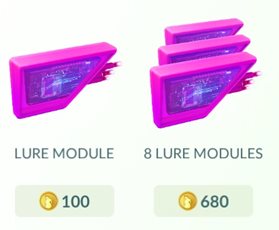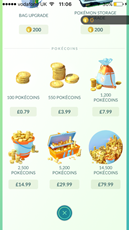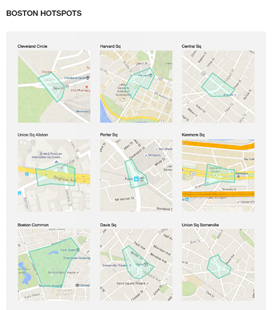Pokémon Go is the latest craze sweeping the nation. The alternate reality (AR) game, with the use of Google maps, involves walking around and catching Pokémon that appear on the screen as if they were there in real life. During the first month after its release, daily active users peaked at around 45 million.
How can Pokémon Go be used in marketing?
Lures on Pokéstops
Lures are in-app purchases that are placed on Pokéstops. A lure will attract more Pokémon to the location for 30 minutes, therefore attracting more Pokémon Go players too. Currently businesses are unable to apply to be a Pokéstop if they aren’t already, but it is hoped in the future this will be allowed, with Mcdonald’s in Japan to become a sponsored location.

(A Pokéstop outside our office with a lure placed on it)
Below you can see the cost of a single lure module costs is 100 Pokécoins or you can purchase 8 for 680 Pokécoins, with the cost of the in-game currency costing between 79p and £79.99.


Tanghui, a Chinese restaurant in Australia decided to make the most of being close to a Pokéstop, by placing lures during lunch and dinner times, while announcing this on their Facebook page to make people aware of this.
Pokémon Go social media competitions
Businesses can use social media to share competitions, such as earning discounts or free stuff if they catch a Pokémon there and send them a picture.
Philly Pretzel Factory in the US posted a competition on Facebook where if you present a picture of a Pokémon you’ve caught at their store and you’ll receive a free pretzel with their purchase.
Ride-share Pokémon hunting
A number of ride-sharing providers have been making the most of the Pokémon Go hype by offering rides so user can catch Pokémon. Boston-based ride-share company
Fasten has been offering 25 minute rides to a number of popular Pokémon hunting spots around the city for only $5.

Pokémon themed events
Another way that businesses have been using Pokémon’s current popularity has been to run Pokémon themed events.
In July, the US Space & Rocket Center in Alabama ran a “Pokémon Go safari zone Sunday” event. This meant that Pokémon Go players were offered special admission to roam the museum hunting Pokémon while learning about space exploration, as well as a showing of one of the Pokémon movies.
Those attending were encouraged to tweet about their experience using the ‘#PokemonInSpace’ hashtag.
Pokémon themed products
Many businesses have made full use of Pokémon’s current popularity by introducing Pokémon themed products to attract those currently hooked on Pokémon Go.
One example of this is Australian doughnut business Doughnut Time. They created limited edition Pokémon themed doughnuts and posted multiple pictures of them on Instagram to their 158k followers with relevant hashtags.
Conclusion
In conclusion, it’s important not to reject the idea that including Pokémon Go as part of a marketing strategy would be a waste of time. Due to its considerable popularity and the footfall this can cause if you’re lucky enough to be a Pokéstop/gym or located near one, it can play a big part in increasing sales.
If the game can keep its popularity and maintain its daily number of users, then these strategies can be hugely successful.